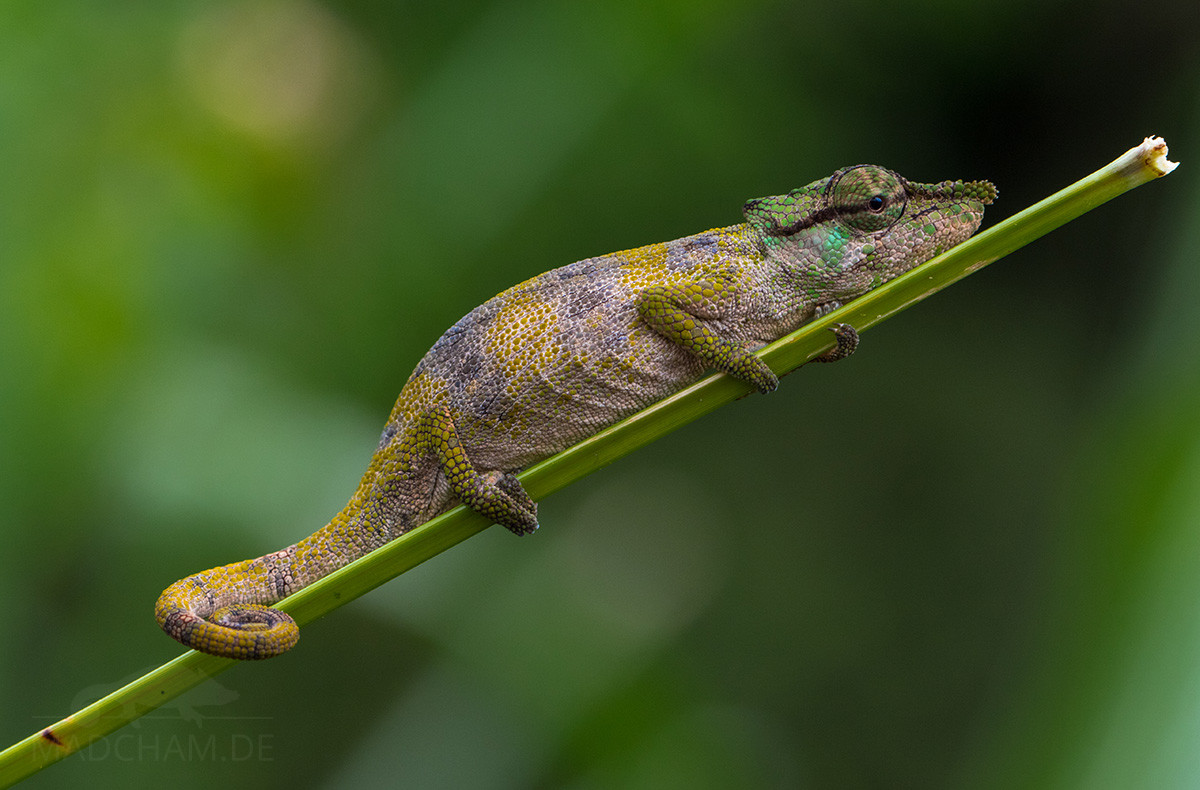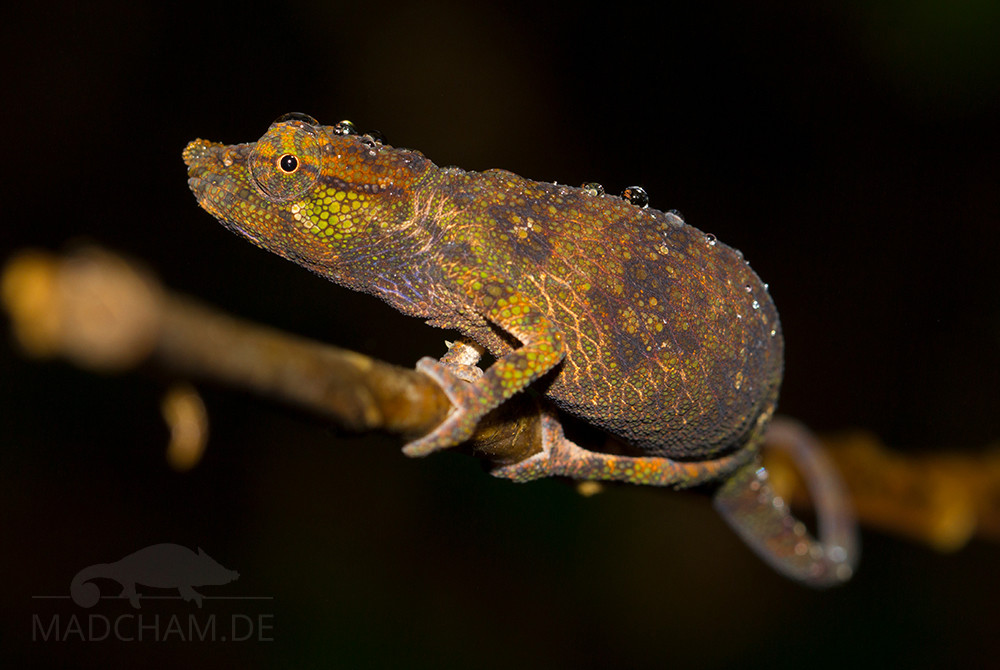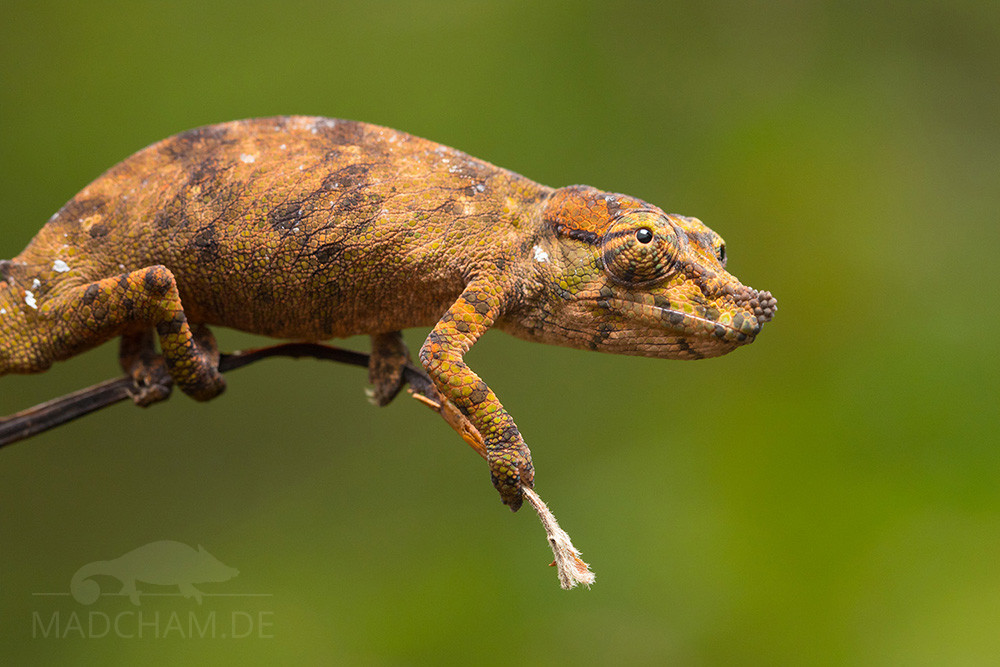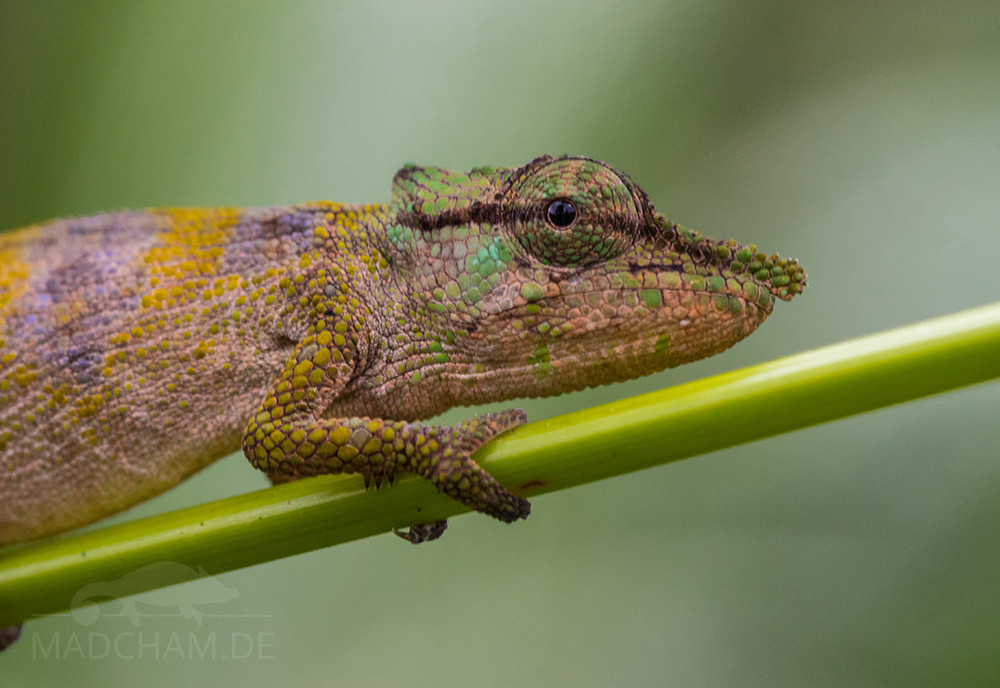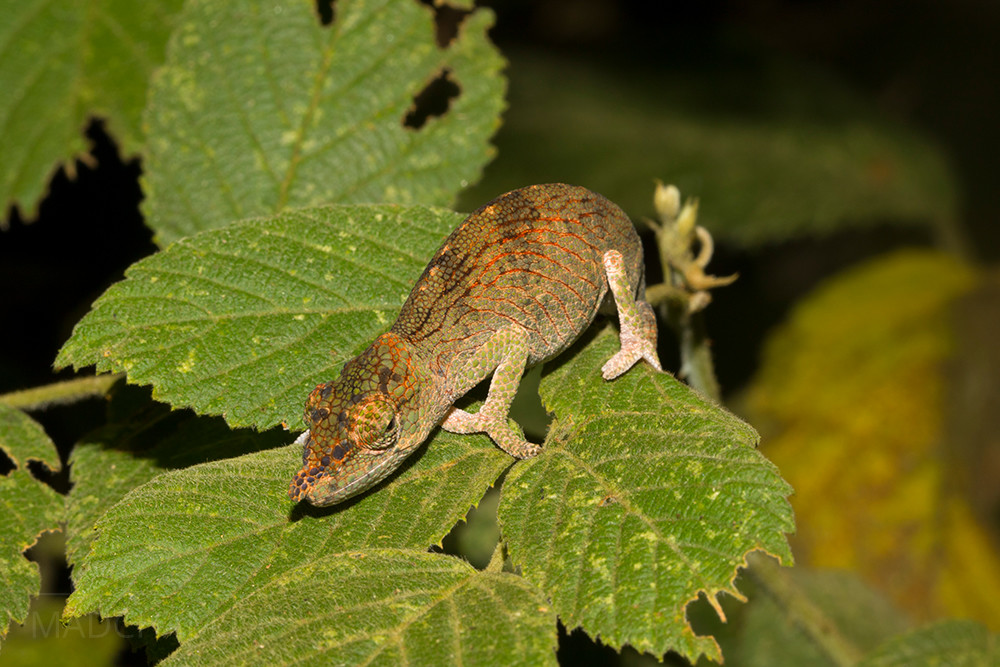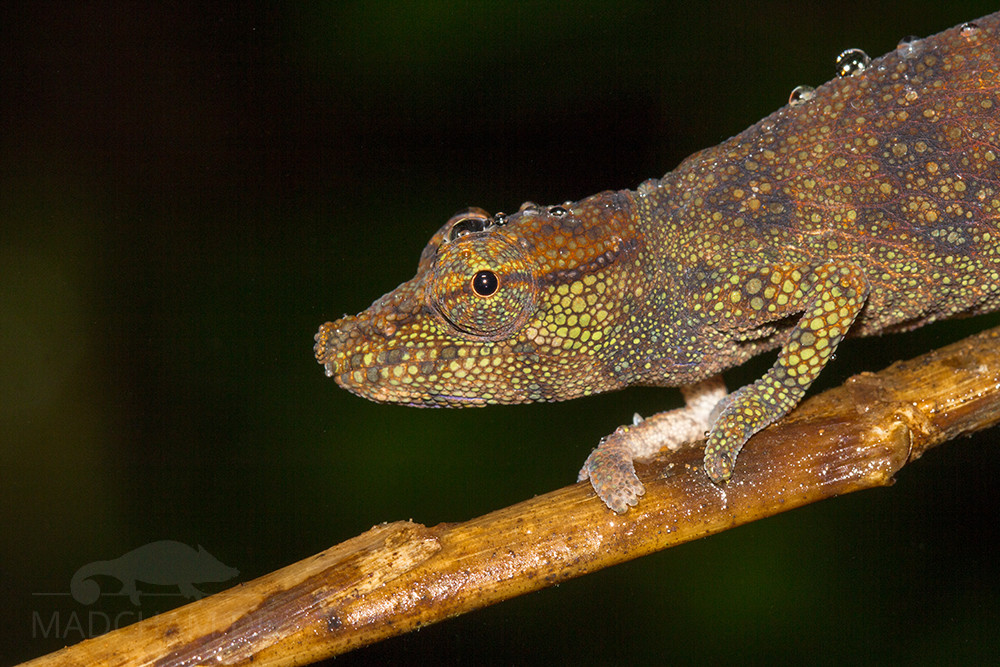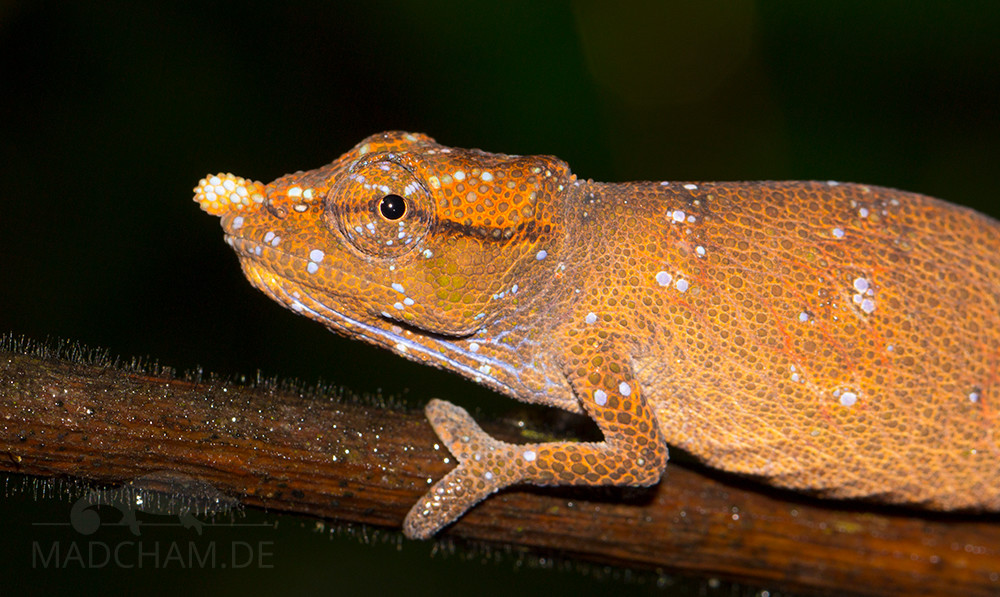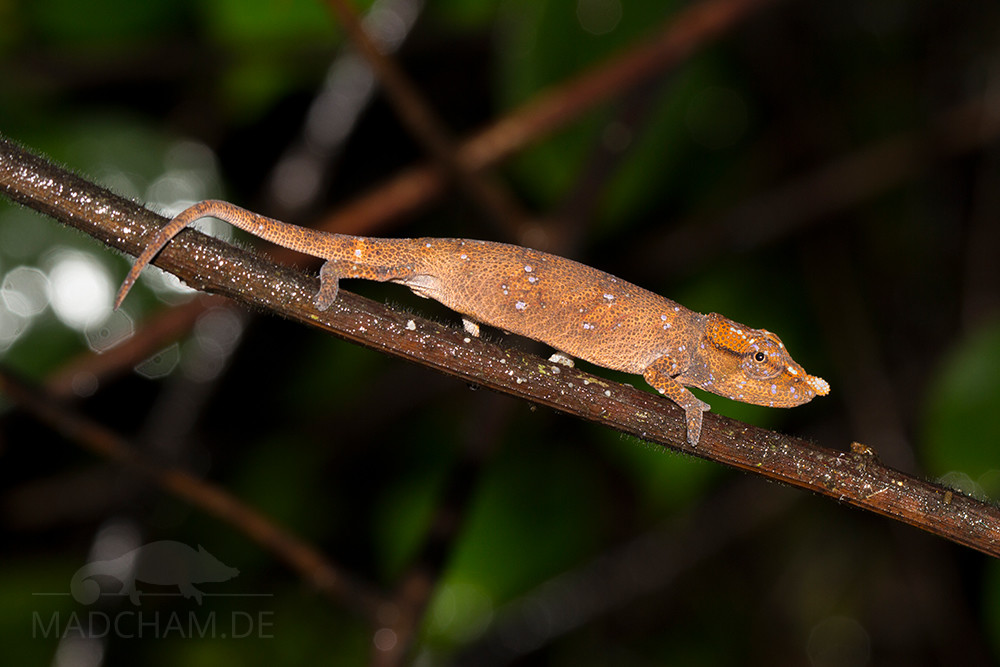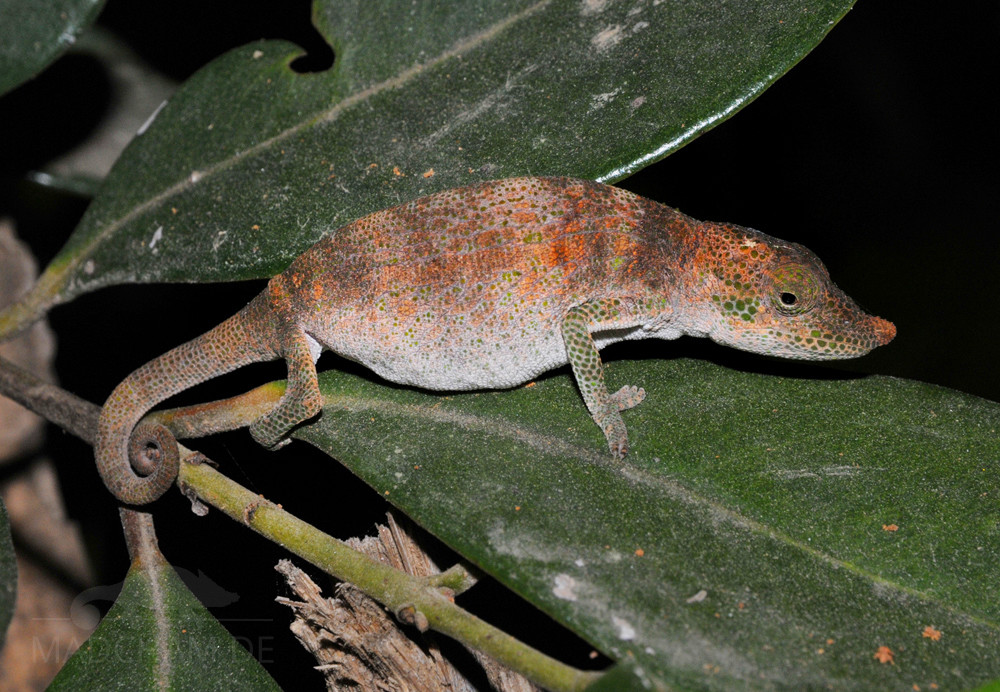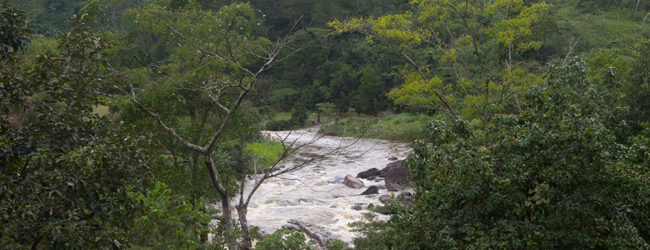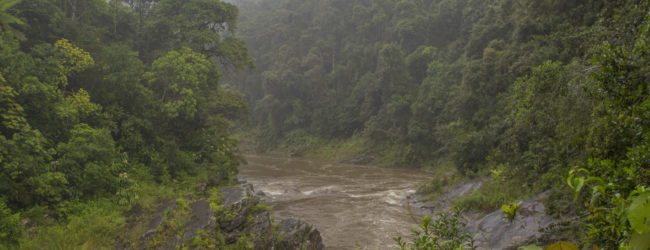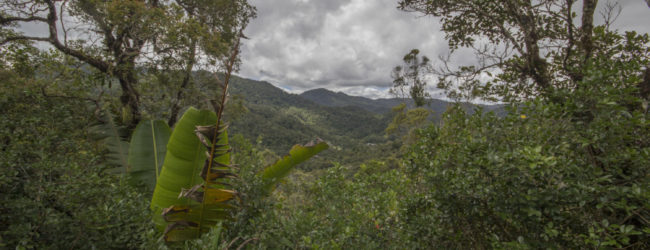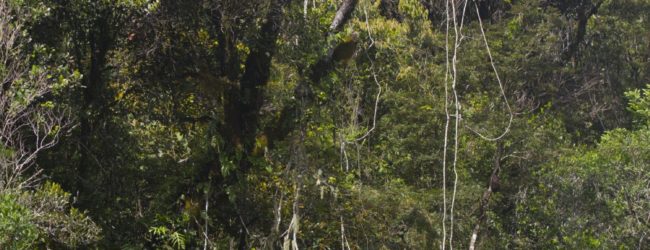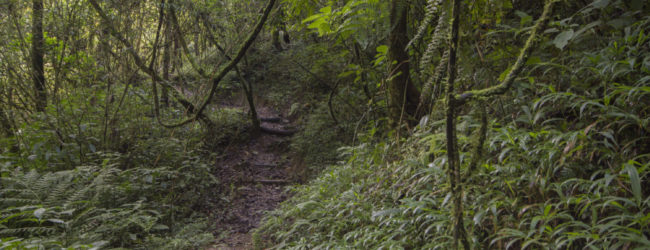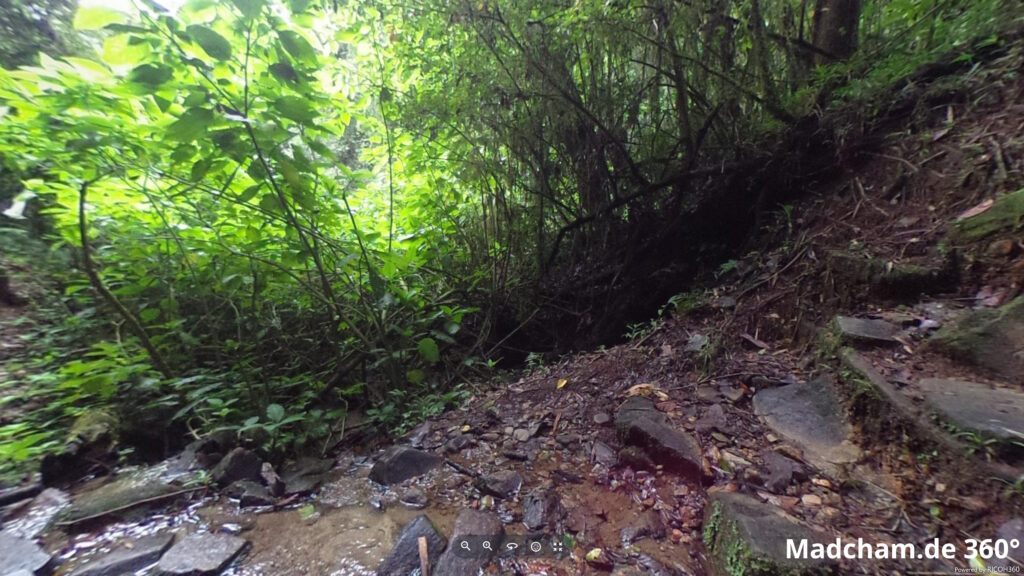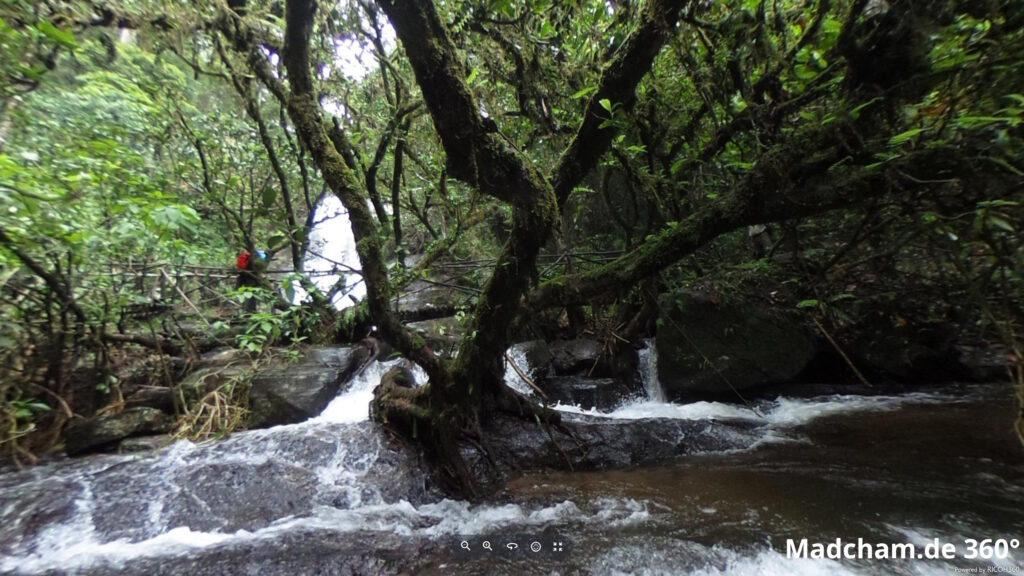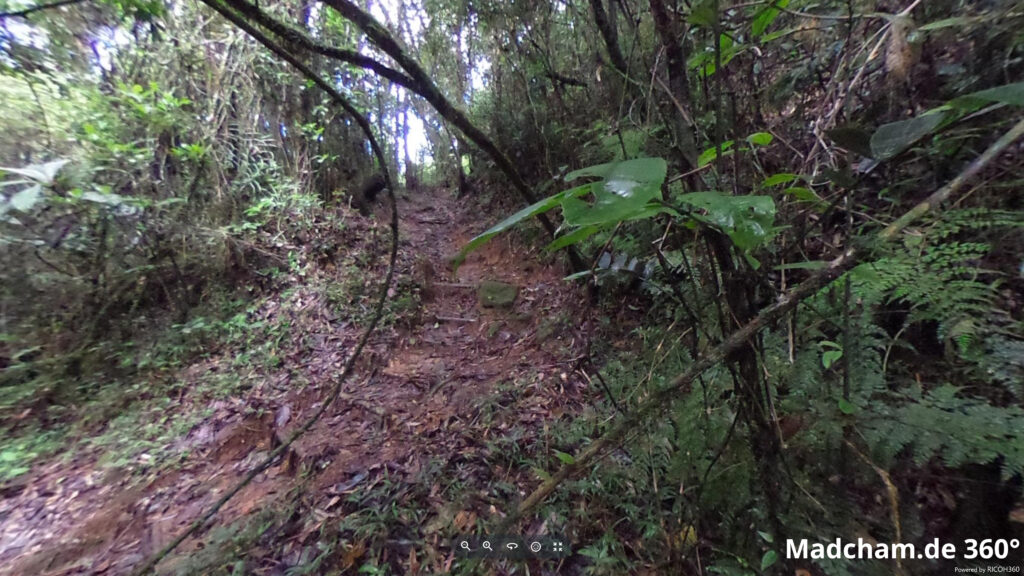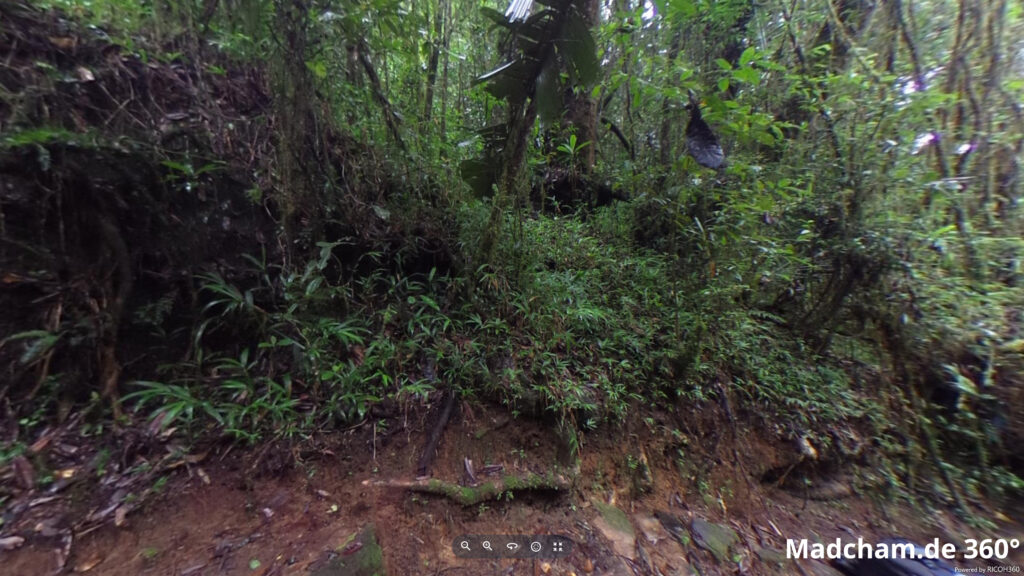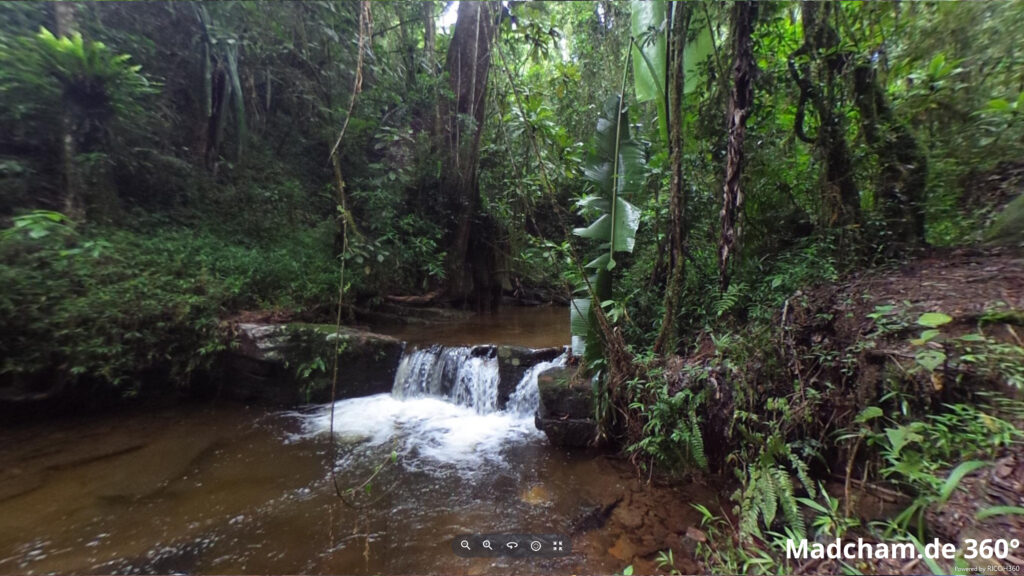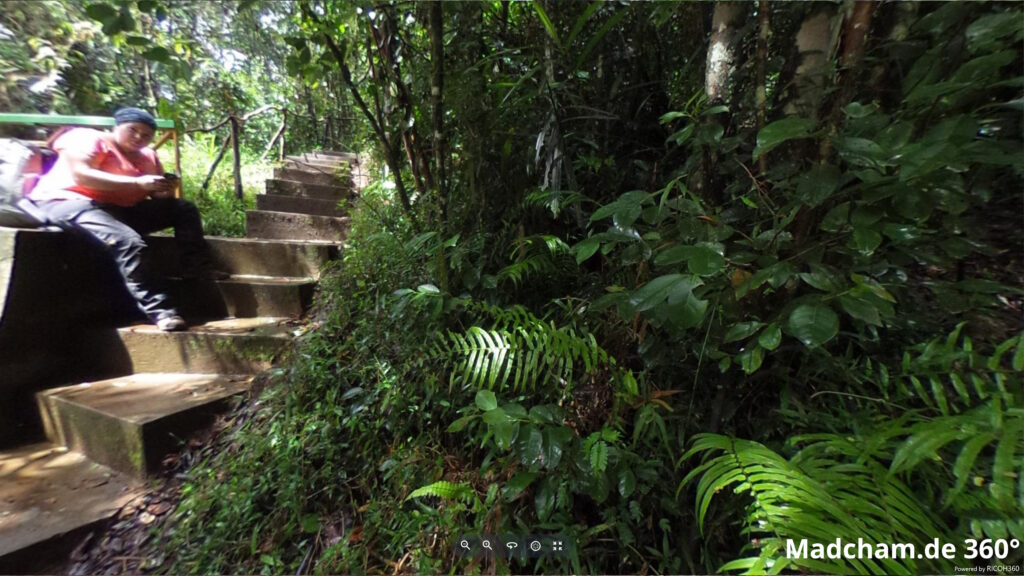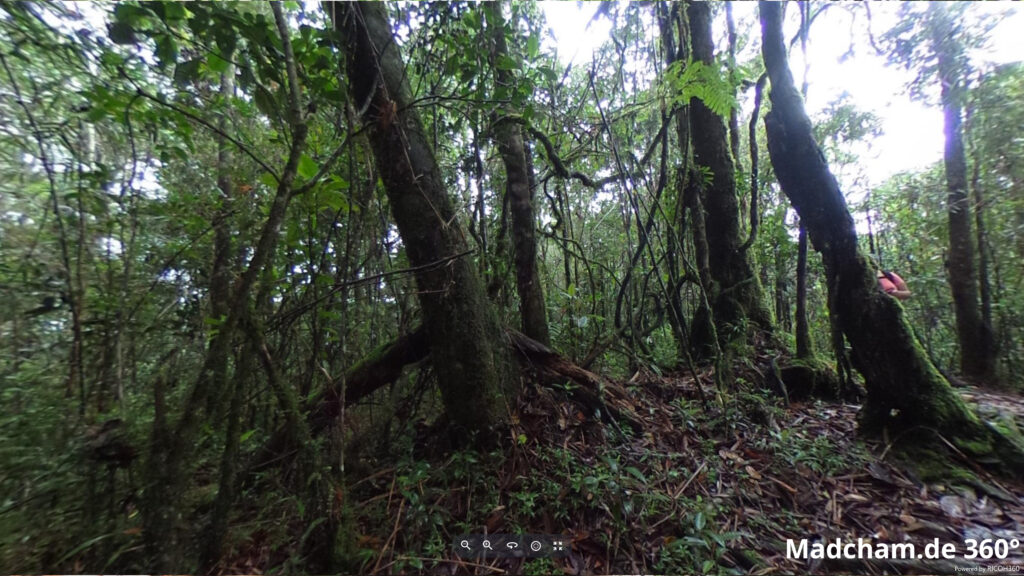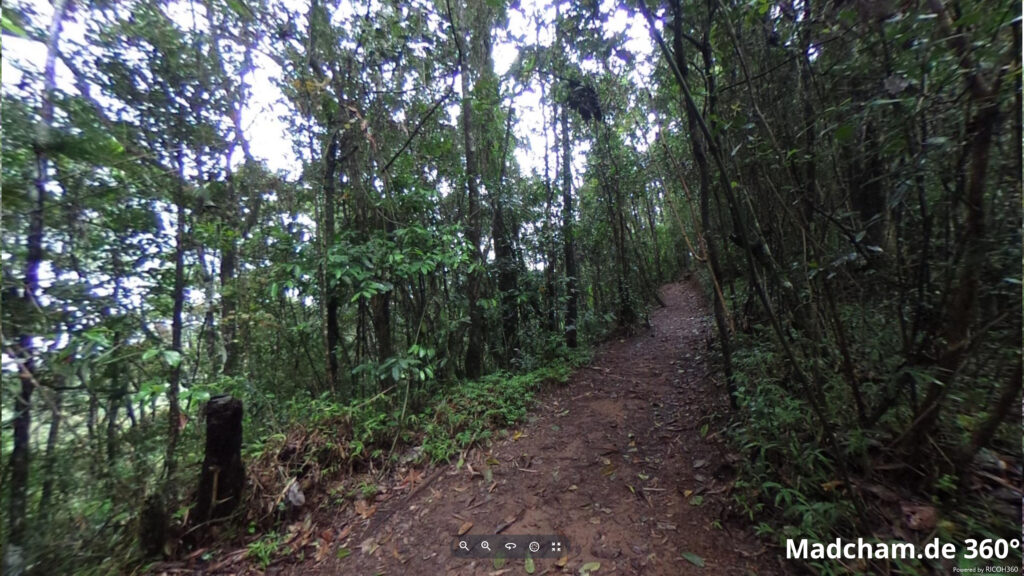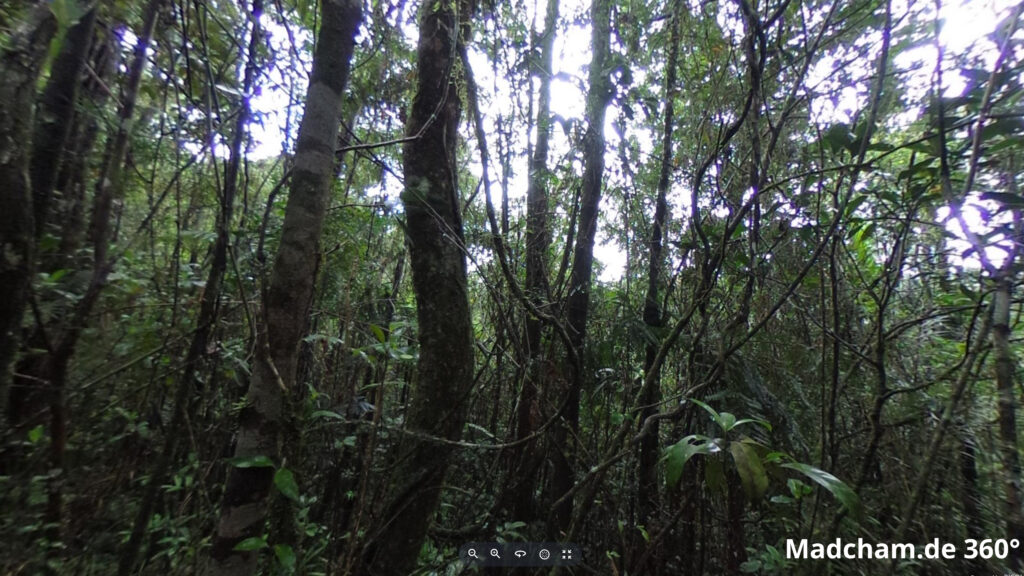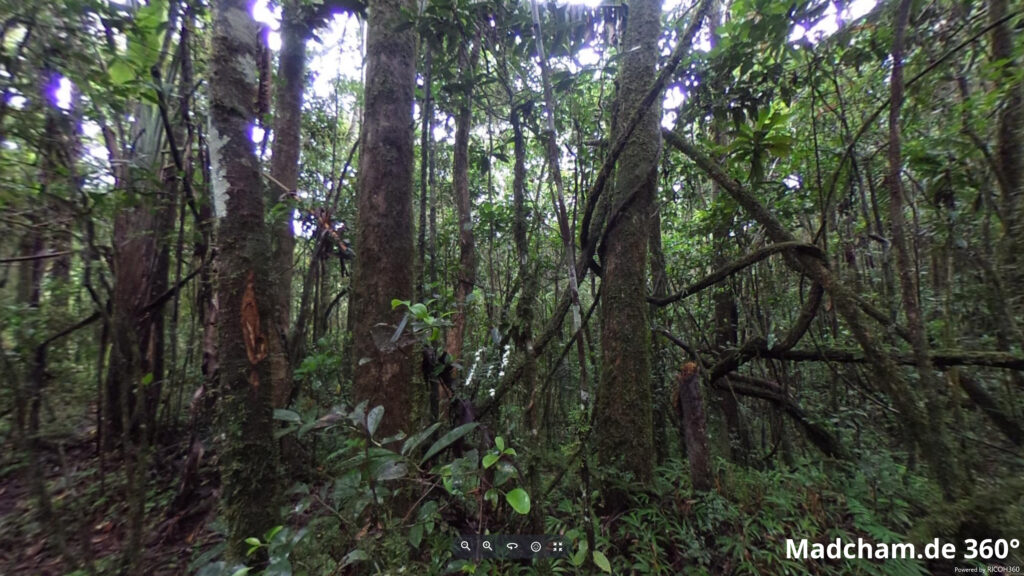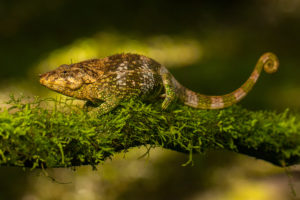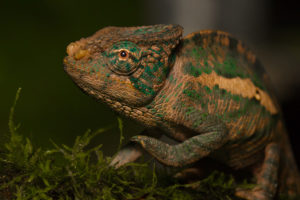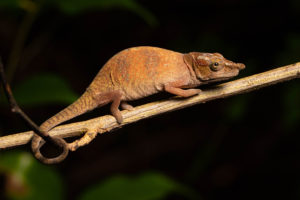no legal export possible
First description:
Prötzel, Scherz, Ratsoavina, Vences & Glaw, 2020 ![]()
Origin of the species name:
David Prötzel, Mark D. Scherz and Frank Glaw from the State Zoological Collection Munich (Germany), Fanomezana M. Ratsoavina from the University of Antananarivo (Madagascar) as well as Miguel Vences from the Zoological Institute of the TU Braunschweig (Germany) named the species after himself at the request of the Indonesian Wewin Tjiasmanto. Tjiasmanto had taken on the sponsorship of a chameleon species through the BIOPAT project. The respective sponsor pays from 2600 € upwards for a sponsorship. The money is used exclusively to support scientific research projects. In return, the sponsor can give a newly discovered plant or animal species of his or her choice.
Distribution:
Calumma tjiasmantoi is only known from the rainforests of the southeast of Madagascar. It is best found in the Ranomafana National Park in the southern highlands. However, the distribution area reaches up to 400 km far into the south, into the forests of Andohahela. The animals are relatively difficult to photograph, as they are usually very shy and immediately turn darkly colored behind each branch as soon as they discover a potential threat.
Look and size:
Calumma tjiasmantoi is a small chameleon. It grows to a maximum length of 7.7 to 9.3 cm, with the females being only slightly smaller than the males. Characteristic is a very short, rounded nose extension – in females, it is no more than a small snub nose. The rostral scale just below the rostral appendage is not integrated into the appendage. Males wear a low casque (around 1.3 mm) and sometimes a dorsal crest with few conical scales, sometimes not. In a relaxed state, the males are broadly yellow and blue-banded on the body, the limbs are yellow-green and the head is light green. The females are mostly brown-beige-green marbled. All Calumma tjiasmantoi wear a dark stripe on both sides, which reaches from the nose over the eyelid to the casque.
| Jan | Feb | Mar | Apr | May | Jun | Jul | Aug | Sep | Oct | Nov | Dec | |
| Average temperature | 23 | 24 | 23 | 23 | 21 | 19 | 19 | 19 | 20 | 21 | 22 | 23 |
| Minimum temperature | 20 | 20 | 20 | 19 | 18 | 15 | 15 | 15 | 15 | 16 | 18 | 19 |
| Maximum temperature | 27 | 27 | 27 | 27 | 25 | 23 | 23 | 23 | 24 | 25 | 26 | 27 |
| Rain days | 27 | 24 | 26 | 19 | 17 | 18 | 21 | 20 | 15 | 16 | 20 | 25 |
We have collected the data given above over several years with thermometers and hygrometers at the finding places of the chameleons. "Average temperature" means that values of a whole month have been calculated to one average value per month. For example all measured minimum temperature values of February have been calculated to one average minimum temperature for February. In plain language, this means single peak values of a day may be a little higher or lower than the average minimum and maximum temperatures. It is possible that a location has an average maximum temperature of 29°C, but one day during that month it had 33°C or even 35°C there.
The rainforest of Ranomafana is located in Madagascar's southern highlands at elevations around 1000 m above sea level. Thus climate is generally cooler than e.g. on the coast or in the southwestern part of the island. Days reach temperatures around 25°C, rainy season may become a little warmer. Sunny places may get a little above 30°C sometimes. At night, temperature drops down to 20°C in rainy season and even lower to 15°C in dry season.
But "dry" season is very relative in Ranomafana, because the forest does not get dry at all. Never. It may rain less and precipitation is not lasting for days, but it is still rich enough to let ground and trees never dry completely. Key factors of Ranomafana's climate are high humidity and cool nights.
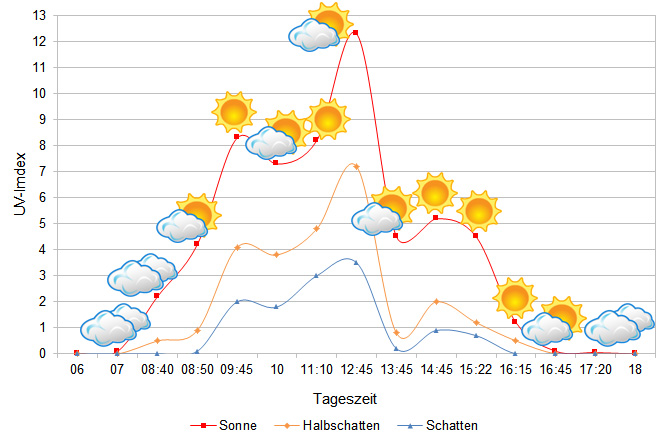
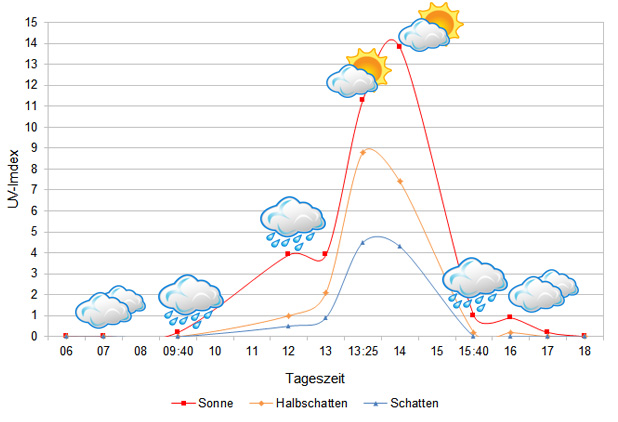
We have measured UVB data with a Solarmeter 6.5 in spring (March) at the peak of activity of chameleons in Madagascar. We always measured the values that a chameleon could maximally reach in its habitat.
Habitat:
The following photos show parts of the habitat of Calumma tjiasmantoi during the rainy season in Ranomafana. The rainforest here stretches over several canyons so that it is quite steep in some places. The ground is rocky and has dense undergrowth. The trees are partly huge and in many places completely overgrown by lichens and mosses. In the morning it is mostly foggy, and it never gets dry. That’s why the rainforest is so fantastically green and blooming. Calumma tjiasmantoi is not only found in the intact rainforest, but also at the edge of the rainforest in adjacent secondary vegetation. They prefer dense bushes to trees and preferably thin, narrow branches on shrubby plants.
Below you will find some 360° images from the rainforest of Ranomafana that we took during the rainy season. If you click on the respective image, the pictures will open in an enlarged view in a separate window. You can use the mouse to rotate in all directions. You also have the option of running the images in full-screen mode. Enjoy!

